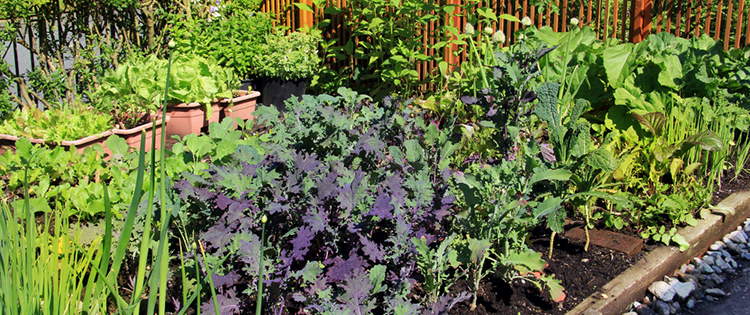The perfectly manicured, landscaped and abundant garden may be a wish list for most – where not a leaf is out of place, and everything is growing exactly where it should be growing.
This is completely unlike a natural bit of vegetation, like in a forest or a grassland, where several types of plants grow and flourish together. Opinions may differ on what looks better, and ultimately it is the owner of a garden who can make the final call on how they would like their garden to look.
Before we proceed to solutions on getting rid of weeds, it is worthwhile to spend a moment considering what exactly weeds are.
What Are The Weeds
No plant is inherently classified as a weed – while you may enjoy a patch of basil in one part of the garden, you may wish to remove the stragglers that pop up in the middle of a bed of roses.
Sometimes you may spend months nurturing a tree sapling, struggling to keep it healthy, and dreaming of the perfect blossoms every spring, while just around the corner an unwanted sapling pops up right in the middle of your driveway, giving you no choice but to pull it out.
A weed is simply a plant that grows in the wrong place, and you rather that it did not grow there.
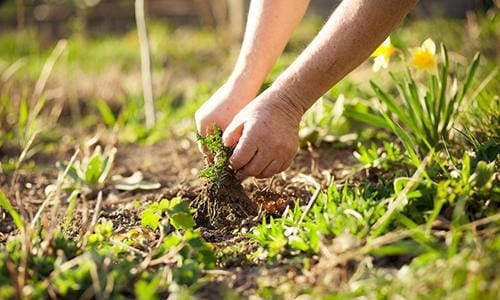
Do We Get Rid Of Weeds The Moment We See Them?
This may seem like a simple answer, for nobody wants weeds in the middle of their garden. But sometimes weeds may tell you something about your garden that you may not be aware of.
Nature has a fascinating way of ensuring that the ecosystem stays in balance. The dandelions that pop up in the middle of your lawn may play an important role in fixing essential minerals into your soil. Their deep tap roots can extract minerals from lower layers of the soil, making it available for the shallow roots of plants around it, like your prized lawn.
So, pulling out a weed may solve one problem immediately, making everything look like it is in place, but the question you should ask yourself is what role that weed plays in the local ecosystem, and how your garden may benefit from it.
Pulling out these weeds may require compensatory action from you – such as considering appropriate companion plants that would perform a similar role or adding the necessary nutrition to your soil externally.
Related: These 9 Common Garden Plants Are Toxic To Chickens
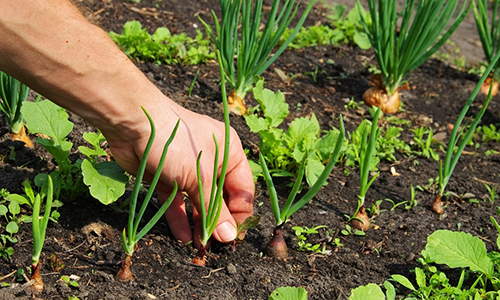
Methods To Control Weed Growth
Once you have identified the plants that you want to have removed from your garden, you can look at a method to control their growth – thus taking care of your weed problem.
Cover The Surface Of The Soil
When we nurture our garden, we look at what each plant needs for healthy growth – sunshine, water, and nutrition through the soil. These same principles may be applied to control the spread of weeds as well.
Many gardeners believe in always maintaining a cover crop over their garden. This occupies all the surface area of the soil, leaving no space for unwanted plants to grow. A cover crop blocks out the sunshine from reaching the soil, so new seeds would not easily be able to get the sunlight they need to germinate.
If you are starting afresh on a new plot of land, you could use landscape fabric to cover the ground, leaving spaces only for the plants that you wish to nurture. This is extremely effective and an easy way to control weeds as you get your new garden going. A good quality fabric will allow the soil to breathe while blocking out the sunlight, thus preventing new seeds from germinating below.

Mulching And Composting
A layer of mulch above your landscape fabric will make your garden look better, and more natural, and will be double barrel protection against unwanted vegetation.
Use woodchips, straw, dried leaves, or hay between your beds – cardboard is also an option if you do not have access to any of the other options. Mulch smothers the weeds, prevents fresh sprouts from growing, and plays an important role in retaining soil moisture. It’s a win-win for your garden.
One step further would be to implement sheet composting. Simply keep layering the soil with alternate layers of green and brown composting materials. As the materials decompose at the lower layers, it will add nutrition to your soil, and fertilize your garden. Make sure the top layer is always brown compost or mulch, to keep your garden looking clean and dry.
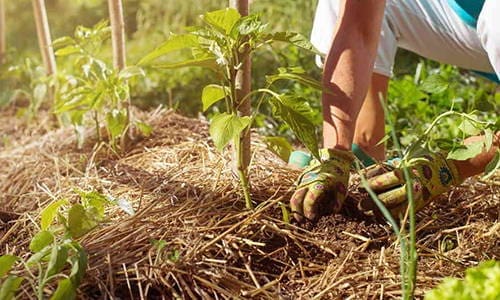
Natural Herbicides
You could try making your own natural herbicides by mixing vinegar with boiling water.
Spray this or pour this into empty patches of land to kill the herbs. Natural and organic herbicides are also available in stores. Make sure you do not apply these products near the plants you wish to keep, or you would inadvertently lose them as well.
Related: Easy DIY Garden Pest Killer You Can Make At Home
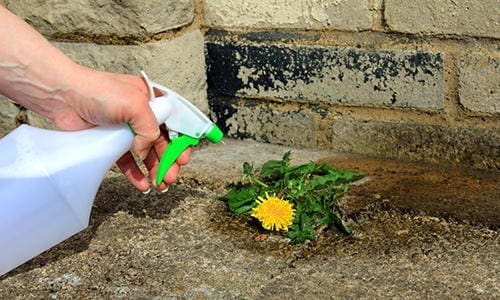
Making The Most Of Weeds
The good old method of pulling out weeds by hand never goes out of style. And it is one of those things you keep doing every time you tend to your garden. If you prefer pulling the weeds out with their roots, you will want to do this when the soil is moist. That’s when it is easier to pull the weeds out.
Another approach to weeding is to simply clip the weeds regularly, without pulling the entire plant out. When a plant is clipped, it discards a portion of the roots into the soil. And when this happens, the roots release nutrition into the soil.
Clipping the weeds is a great way to allow the weeds to play their role in the ecosystem and make the most of the contribution they have to your garden. They will, however, keep growing back and this will require you to maintain the garden regularly.

Weeds On Your Plate
Many plants that you would call weeds are edible and make for a great salad.
Find out about the weeds you have around you and investigate whether they could be eaten. Your session of weeding would officially be called foraging, and you return with a handful of edible plants every time you get some garden work done!
Be sure to harvest your weeds before they go to seed, so that you keep the weeds under control.
You may also like:
 Weed Tea – Turning Unwanted Plants Into Fertilizer
Weed Tea – Turning Unwanted Plants Into Fertilizer
The Natural Painkiller that Grows in Your Backyard (Video)
5 Vegetables That Are Too Easy To Grow
